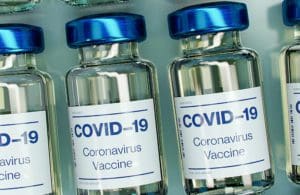
[Photo by Daniel Schludi on Unsplash]
With COVID-19 cases surging in many parts of the world, the need is high for multiple vaccines to slow the virus.
But the fate of adenovirus-vectored vaccines from AstraZeneca and Johnson & Johnson has become murky after a limited number of people receiving those vaccines have developed blood clot disorders.
Officials in both the EU and the U.S. suspect there could be a link between adenovirus-based COVID-1 vaccines and blood clotting problems such as cerebral venous sinus thrombosis. Authorities in both countries have either temporarily halted or constrained the use of adenovirus vaccines.
Russia’s Sputnik V and China’s CanSino Biologics also have COVID-19 vaccines based on an adenovirus platform.
1. The blood clotting problems seems rare but more common in women
Even though blood clotting problems have gotten a substantial amount of attention, the problem seems rare. In the U.S., there have been six cases of such events out of approximately 6.9 million doses administered, resulting in an incidence rate of 0.0001%.
Women have been more prone to thromboembolic events after receiving vaccines from AstraZeneca and Johnson & Johnson. German officials have tallied 29 cases of cerebral venous sinus thrombosis in recipients of the AstraZeneca vaccine — all of them female.
The European Medicines Agency has warned of the risk of clots for women under 60 years old after the first vaccine dose.
In the U.S., all six blood clot reports have involved women between 18 and 48 years old.
There was also a numerical imbalance in the Phase 3 trial for Johnson & Johnson’s COVID-19 vaccine. A total of 0.06% of vaccine recipients had thromboembolic events, while 0.05% of placebo recipients did. The difference was, however, not statistically significant.
2. Vaccine hesitancy could tick back up
A significant portion of the population has been reluctant to receive COVID-19 vaccines. Headlines about potential health complications linked to at least some of those vaccines will fuel such vaccine hesitancy.
Research from the Kaiser Family Foundation showed that vaccine hesitancy had been trending downward. In December, 63% of survey respondents said they were either against COVID-19 vaccination or on the fence about it. By March, that figure had fallen to 37%, while another 32% had already been at least partly vaccinated.
But with health concerns being one of the most common causes of vaccine hesitancy, headlines about potential blood-clotting risks from masks will likely drive more vaccine hesitancy.
3. Blood-clotting concerns could constrain vaccination efforts in some regions
Johnson & Johnson’s COVID-19 vaccine had been authorized in Europe but had not been in use when the European Medicines Agency (EMA) announced it was investigating the vaccine’s potential to cause blood clots. Johnson & Johnson has decided to “proactively delay” the use of the vaccine in Europe.
AstraZeneca’s vaccine was in use in Europe, but authorities have restricted its use owing to the blood clot risk.
AstraZeneca had anticipated that its COVID-19 vaccine would win regulatory authorization in the U.S. in the second half of the year.
It remains unclear how regulatory authorities will handle the vaccines now that headlines related to blood clots have placed a “cloud on adenoviral vector vaccines,” as Navin Jacobs, a UBS analyst, explained in a recent briefing note.
UBS analysts concluded that even with an imperfect safety record, regulators could conclude that the benefits of vaccines from Johnson & Johnson and AstraZeneca outweigh the risks for many people. That conclusion, however, assumes that “the [blood-clotting] rates do not increase and a full vetting has occurred,” Jacobs said.
In the long run, the decisions of prominent regulatory authorities regarding adenovirus vaccines could have a cumulative effect on vaccinations worldwide. The decision to restrict the use of the vaccines could slow vaccination efforts in developing countries, which have a strong need for the vaccines, which are inexpensive and have simple storage requirements.
4. Short-term demand for mRNA and peptide vaccines could spike
With solid safety and efficacy profiles, mRNA vaccines from Moderna and Pfizer/BioNTech could grow even more vital to mass-vaccination efforts in developed countries. Developers of other mRNA-based vaccines such as CureVac (Tübingen, Germany) could also benefit.
NovaVax, conversely, is relying on a subunit vaccine approach, which pharma companies have used for modern flu vaccines, among others.
Some countries are already shying away form J&J’s vaccine. Australia, for instance, has abandoned its plans to purchase the vaccine.
Another factor that could drive interest away from adenovirus-based vaccines is concerns about their use as boosters. The immune response from the first adenovirus-based vaccine administration may limit the efficacy of a repeat vaccination.
5. The U.S. still likely has enough vaccine for 2021
Some 190 million vaccine doses have been administered in the U.S., with Johnson & Johnson vaccines accounting for less than 4% of that total. The U.S. has ordered some 100 million doses with an option to buy 100 million more.
The country is much more reliant on mRNA vaccines, having purchased some 600 million doses of the two-dose vaccines from Pfizer and Moderna together. Additionally, the U.S. has purchased 110 million doses from Novavax, which are slated for distribution in the second half of the year.
With mRNA vaccines alone, the U.S. will likely have enough vaccine for the entire population.
6. Curbing use of adenovirus vaccines could heighten the long-term risk
With the U.S. ramping up mass-vaccination efforts, the prospects of a return to relative normal in the second half of 2021 seems likely. But the potential backlash against adenovirus-based COVID-19 vaccines could complicate vaccinations in developing countries.
If the novel coronavirus is left to spread in emerging markets, it is likely to continue to mutate, potentially leading to weakened vaccine efficacy over time. Vaccines, however, could lower case counts, thus limiting the chances of new mutants and variants developing.
“Risk to the U.S. in ’21 looks manageable, but unless other vaccines are approved in due course with significant capacity, there may be a resurgence in risk in the U.S. by mid-’22,” Jacobs said.